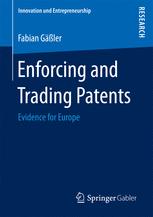

Most ebook files are in PDF format, so you can easily read them using various software such as Foxit Reader or directly on the Google Chrome browser.
Some ebook files are released by publishers in other formats such as .awz, .mobi, .epub, .fb2, etc. You may need to install specific software to read these formats on mobile/PC, such as Calibre.
Please read the tutorial at this link: https://ebookbell.com/faq
We offer FREE conversion to the popular formats you request; however, this may take some time. Therefore, right after payment, please email us, and we will try to provide the service as quickly as possible.
For some exceptional file formats or broken links (if any), please refrain from opening any disputes. Instead, email us first, and we will try to assist within a maximum of 6 hours.
EbookBell Team

4.1
30 reviewsApplying novel datasets, Fabian Gäßler analyzes how key aspects of the current patent system in Europe and Germany, respectively, affect patent enforcement and patent trade. In particular, he shows what factors determine court selection in patent litigation and how the jurisdictional separation of validity and infringement questions favors the patent holder. The author further provides empirical evidence for the market for patents in Europe. The presented findings yield important implications for the ongoing debate on the optimal design of patent systems.